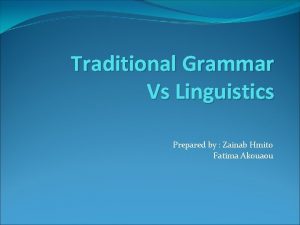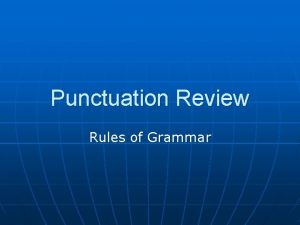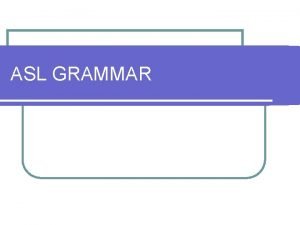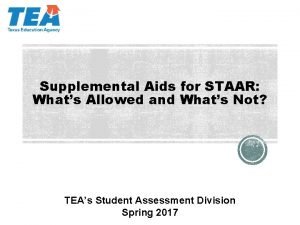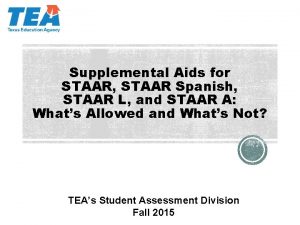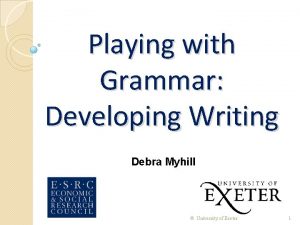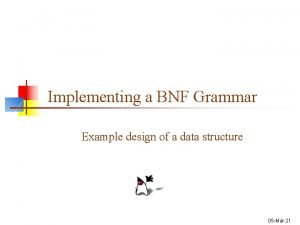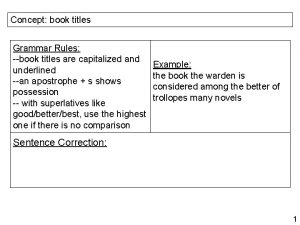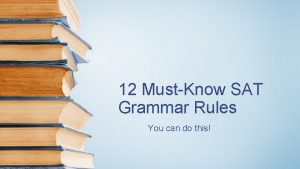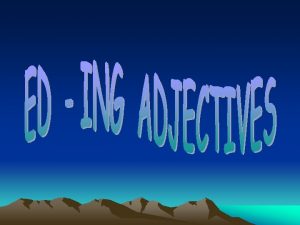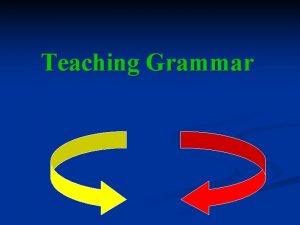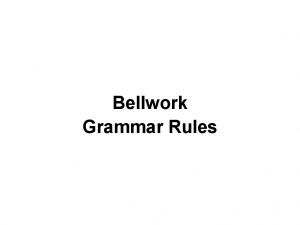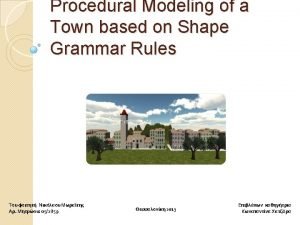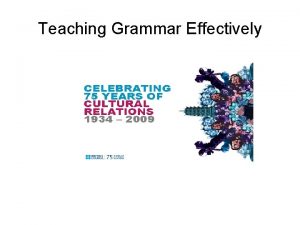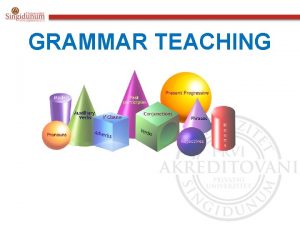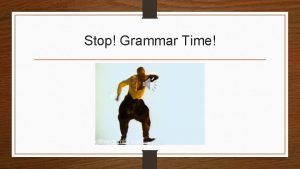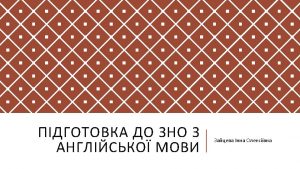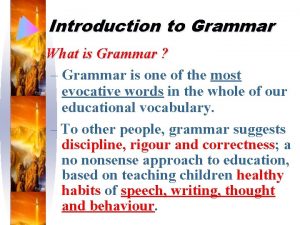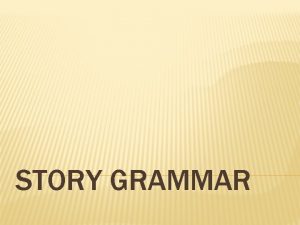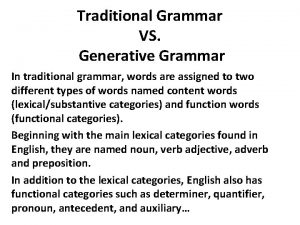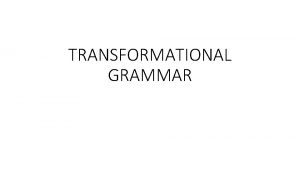25 Grammar Rules III Rules 16 20 16















- Slides: 15

25 Grammar Rules III Rules 16 -20

16. Use the correct form of to, too, and two. To has two uses: as part of an infinitive verb: to be, to run, to see, to write. As a preposition: I went to the store. I run to the goal.

Too has two uses: It means also. I want to go, too. (I also want to go. ) To indicate an excessive ammount of something. The car was going too fast. The car was going too slow. There is too much snow. There is too little snow. (Yes, you can have excess of insufficiency. )

Two has only one meaning (ironically) Quantity.

17. Use the correct form of there, their, and they’re There is used to indicate place. She wanted to go there. Sometimes, place can mean in the world or universe. When there is used at the beginning of a sentence to introduce the sentence, it is called an expletive. (exclamation) There is something about a puppy that makes everyone happy.

Their Is as possessive pronoun Their car is new.

They’re Is a contraction of they are. They’re in their new car over there.

18. Use the correct for of where, wear, ware, we’re and weir. Where is used to indicate place. Where does she want to go to college?

Wear Has two meanings 1. to cover or adorns one’s self, or a thing, with objects He wears his hat backwards sometimes. 2. to describe the use of an object. The dull knife showed much wear.

Ware Indicates a commercial object. The salesman’s wares were stored in a warehouse.

Were Is the past tense of the infinitive “to be. ” Were you happy to see your old friends again?

We’re Is the contraction of we are. We’re going shopping.

Weir Is the water spill-over on the side of a dam. Make sure you avoid the weir when canoeing down the river.

19. Use the correct form of your and you’re Your is possessive (notice it doesn’t have an apostrophe. ) Your report is very well written. You’re is the contraction of you are. You’re going to college, aren’t you?

20. Use proper capitalization and punctuation. All sentences end with periods, question marks, or (rarely) exclamation points. Commas are used sparingly. In a list of three or more things that includes the word and, a comma precedes it. I want a bat, a ball, and a glove.
 Hamlet act iii scene iii
Hamlet act iii scene iii Right linear grammar
Right linear grammar Strengths of traditional grammar
Strengths of traditional grammar Chomsky hierarchy
Chomsky hierarchy Closure properties of regular languages
Closure properties of regular languages When to use a comma before and
When to use a comma before and Asl grammar
Asl grammar Blank graphic organizers for staar
Blank graphic organizers for staar Pictorial models of fractions bars/circles with no labels
Pictorial models of fractions bars/circles with no labels Different grammar rules
Different grammar rules How to write bnf grammar
How to write bnf grammar Book title grammar
Book title grammar Grammar rules to know for the sat
Grammar rules to know for the sat Grammar and mechanics rules for staar 2021
Grammar and mechanics rules for staar 2021 Would rather contraction
Would rather contraction Grammar rules frustrate me they're not logical they are so
Grammar rules frustrate me they're not logical they are so


